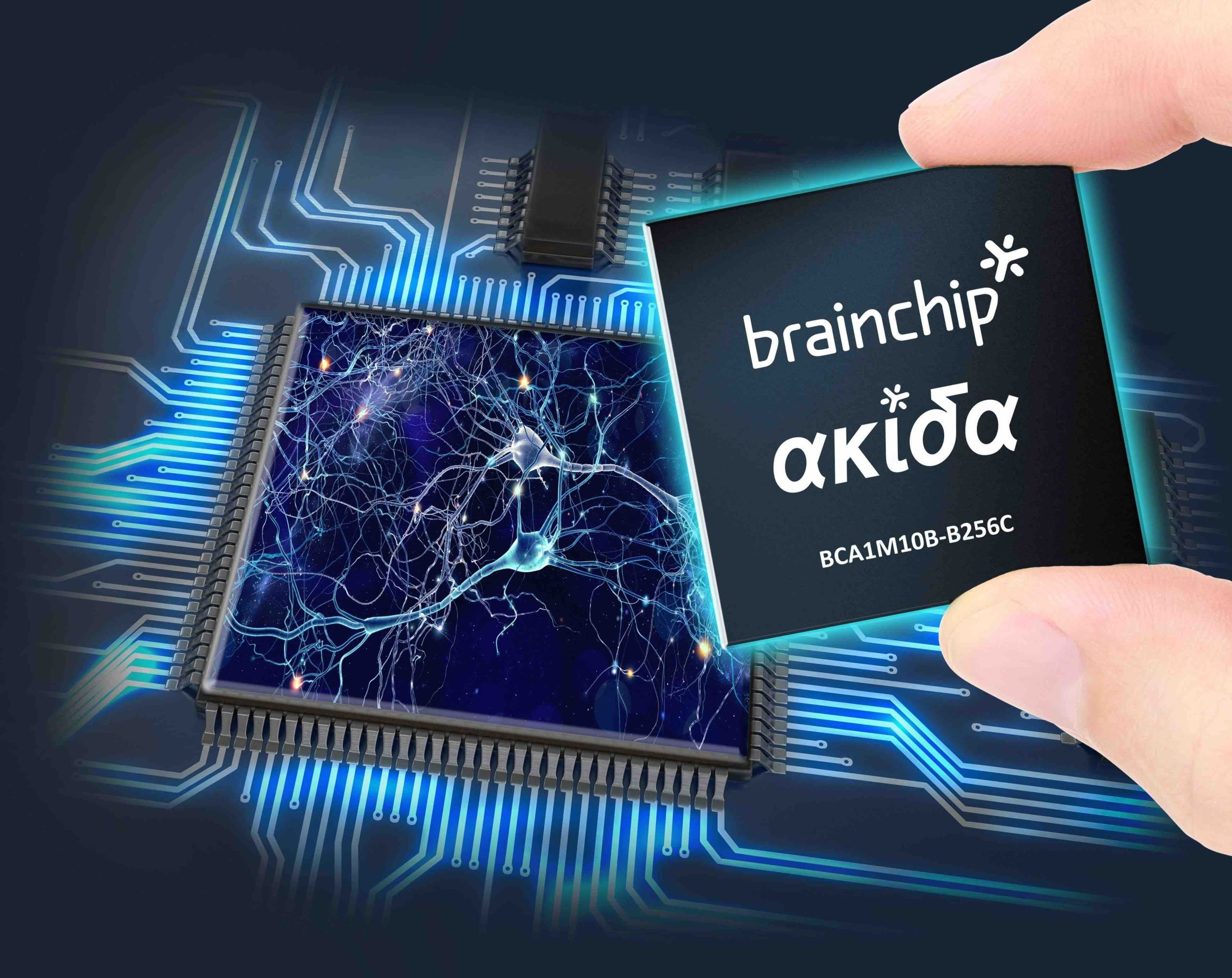Afternoon Chippers ,
GlobalFoundries spending a few bob .
For those that are new to Brainchip......GlobalFoundries fabricated our last Physical Chip , AKD1500 .

.
/ GlobalFoundries Announces $16B U.S. Investment to Reshore Essential Chip Manufacturing and Accelerate AI Growth
GlobalFoundries Announces $16B U.S. Investment to Reshore Essential Chip Manufacturing and Accelerate AI Growth
June 4, 2025
Backed by leading tech giants, the investment reinforces domestic semiconductor production and U.S.-based innovation in AI-enabling and power efficient technologies
MALTA, N.Y., June 4, 2025 – GlobalFoundries (Nasdaq: GFS) (GF), working with the Trump Administration and with support from leading technology companies aiming to onshore critical components of their supply chain, today announced plans to invest $16 billion to expand its semiconductor manufacturing and advanced packaging capabilities across its facilities in New York and Vermont. GF’s investment is a strategic response to the explosive growth in artificial intelligence, which is accelerating demand for next-generation semiconductors designed for power efficiency and high-bandwidth performance across datacenters, communications infrastructure and AI-enabled devices.
GF is collaborating with major technology companies such as Apple, SpaceX, AMD, Qualcomm Technologies, Inc., NXP and GM, that are committed to reshoring semiconductor production to the U.S. and diversifying their global supply chains. These companies partner with GF to support their production of U.S.-made chips, underscoring GF’s role as a trusted supplier of essential semiconductors and a key enabler of supply chain security.
“At GlobalFoundries, we are proud to partner with pioneering technology leaders to manufacture their chips in the United States—advancing innovation while strengthening economic and supply chain resiliency,” said Tim Breen, CEO of GlobalFoundries. “The AI revolution is driving strong, durable demand for GF’s technologies that enable tomorrow’s datacenters – including GF’s leading silicon photonics, as well as GaN for power applications. Meanwhile at the edge, GF’s proprietary FDX technology is uniquely positioned to support AI functionality with low power consumption. With all these technologies and more manufactured right here in the U.S., GF is proud to play its part in accelerating America’s semiconductor leadership.”
“GlobalFoundries investment is a great example of the return of United States manufacturing for critical semiconductors,” said U.S. Secretary of Commerce, Howard Lutnick. “President Trump has made it a fundamental objective to bring semiconductor manufacturing home to America. Our partnership with GlobalFoundries will secure U.S. semiconductor foundry capacity and technology capabilities for future generations.”
The rapid rise of AI in both the cloud and at the edge is driving the adoption of new technology platforms and 3D heterogeneous integration technologies. These advanced solutions are essential to meet the exponentially growing requirements for power efficiency, bandwidth density and performance. GF is uniquely positioned to lead in this space, with its 22FDX® and silicon photonics capabilities in production in New York and advanced development of differentiated GaN-based power solutions in Vermont.
GF’s investment builds upon the company’s existing U.S. expansion plans, including more than $13 billion to expand and modernize its New York and Vermont facilities and funding for its recently launched New York Advanced Packaging and Photonics Center—the first U.S.-based facility of its kind dedicated to silicon photonics packaging. GF is committing an additional $3 billion, which includes advanced research and development initiatives focused on packaging innovation, silicon photonics and next-generation GaN technologies. In aggregate, these investments represent a $16 billion plan to strengthen U.S. semiconductor leadership and accelerate innovation in AI, aerospace, automotive and high-performance communications.
“Today’s announcement is a direct result of President Trump’s leadership and his vision to bring back high-paying manufacturing jobs and reestablish secure, domestic supply chains for critical technologies,” said Dr. Thomas Caulfield, Executive Chairman of GlobalFoundries. “We look forward to continuing to work with the U.S. government to help create the conditions for industry and government to work together and drive meaningful, long-term impact.”
“GlobalFoundries has supplied semiconductors for Apple products since 2010 and we’re excited to see them expand right here in the United States. These chips are an essential part of Apple products like iPhone, and they’re a powerful example of American manufacturing leadership.”
Tim Cook, Apple’s CEO
“Advanced semiconductors are critical to the advanced satellite capabilities which SpaceX has been pioneering for over two decades. We are excited by the expansion of GlobalFoundries’ manufacturing base right here in the U.S., which is core to Starlink’s growth and our commitment to manufacturing in the U.S., as well as our mission to deliver high-speed internet access to millions of people around the world.”
Gwynne Shotwell, president and COO at SpaceX
“As a valued technology partner, we’re pleased to see GlobalFoundries deepen its commitment to U.S. manufacturing. These efforts are critical to building a secure and resilient semiconductor supply chain in the U.S. to support the next wave of innovation in our industry.”
Dr. Lisa Su, AMD Chair and CEO
“As a strategic supplier of Qualcomm, GlobalFoundries shares our vision for strengthening U.S. chip production capacity. This commitment from GlobalFoundries will help secure a resilient semiconductor supply chain to support the next wave of U.S. technology innovation, especially in areas vital to enabling power efficient computing, connectivity, and edge intelligence.”
Cristiano Amon, president and CEO of Qualcomm Incorporated
“Deepening our partnership with GlobalFoundries aligns with NXP’s hybrid manufacturing strategy, where we work with leading foundry partners to better serve our customers’ strategic technology, capacity and resilience needs. This collaboration allows us to scale efficiently, expand production in the U.S. and continue delivering for our customers. It’s a strong step forward in building a resilient, high-performing semiconductor supply chain in the United States.”
Kurt Sievers, chief executive officer of NXP Semiconductors
“Semiconductors are critical to the future of vehicles, and their importance will only grow. GlobalFoundries’ investment supports our work to secure a reliable, U.S.-based chip supply—essential for delivering the safety, infotainment and features our customers expect.”
Mark Reuss, president of General Motors
About GF
GlobalFoundries (GF) is a leading manufacturer of essential semiconductors the world relies on to live, work and connect. We innovate and partner with customers to deliver more power-efficient, high-performance products for automotive, smart mobile devices, internet of things, communications infrastructure and other high-growth markets. With our global manufacturing footprint spanning the U.S., Europe, and Asia, GF is a trusted and reliable source for customers around the world. Every day, our talented global team delivers results with an unyielding focus on security, longevity and sustainability. For more information, visit
www.gf.com.
©GlobalFoundries Inc., GF, GlobalFoundries, the GF logos and other GF marks are trademarks of GlobalFoundries Inc. or its subsidiaries. All other trademarks are the property of their respective owners.
Forward-looking Information
This press release includes “forward-looking statements” that reflect our current expectations and views of future events. These forward-looking statements are made under the “safe harbor” provisions of the U.S. Private Securities Litigation Reform Act of 1995 and include but are not limited to, statements regarding our financial outlook, future guidance, product development, business strategy and plans, and market trends, opportunities and positioning. These statements are based on current expectations, assumptions, estimates, forecasts, projections and limited information available at the time they are made. Words such as “expect,” “anticipate,” “should,” “believe,” “hope,” “target,” “project,” “goals,” “estimate,” “potential,” “predict,” “may,” “will,” “might,” “could,” “intend,” “shall,” “outlook,” “plan,” “aim,” and variations of these terms or the negative of these terms and similar expressions are intended to identify these forward-looking statements, although not all forward-looking statements contain these identifying words. Forward-looking statements are subject to a broad variety of risks and uncertainties, both known and unknown. Any inaccuracy in our assumptions and estimates could affect the realization of the expectations or forecasts in these forward-looking statements. For example, our business could be impacted by geopolitical conditions such as the ongoing political and trade tensions with China; the market for our products may develop or recover more slowly than expected or than it has in the past; our operating results may fluctuate more than expected; there may be significant fluctuations in our results of operations and cash flows related to our revenue recognition or otherwise; a network or data security incident that allows unauthorized access to our network or data or our customers’ data could result in a system disruption, loss of data or damage our reputation; we could experience interruptions or performance problems associated with our technology, including a service outage; global economic conditions could deteriorate; and our expected results and planned expansions and operations may not proceed as planned if funding we expect to receive is delayed or withheld for any reason. It is not possible for us to predict all risks, nor can we assess the impact of all factors on our business or the extent to which any factor, or combination of factors, may cause actual results or outcomes to differ materially from those contained in any forward-looking statements we may make. Moreover, we operate in a competitive and rapidly changing market, and new risks may emerge from time to time. These statements are based on our historical performance and on our current plans, estimates and projections in light of information currently available to us, and therefore you should not place undue reliance on them.
Although we believe that the expectations reflected in our statements are reasonable, we cannot guarantee that the future results, levels of activity, performance or events and circumstances described in the forward-looking statements will be achieved or occur. Moreover, neither we, nor any other person, assumes responsibility for the accuracy and completeness of these statements. Except to the extent required by federal securities laws, we undertake no obligation to update any information or any forward-looking statements as a result of new information, subsequent events or any other circumstances after the date hereof, or to reflect the occurrence of unanticipated events. Investors are urged to review in detail the risks and uncertainties discussed in our 2024 Annual Report on Form 20-F, current reports on Form 6-K and other reports filed with the Securities and Exchange Commission.
Media Contact:
Erica McGill
e
rica.mcgill@gf.com
Regards,
Esq.
.




Strategic partnerships are already in place
Strong IP moat & unique technology
Context / Comparison:


